Energy bills explained: how to understand your bill and make sure it’s correct
If you feel like you need your energy bills explained to you, you're not alone - our energy expert breaks down exactly what your bill means and how to check if it's right
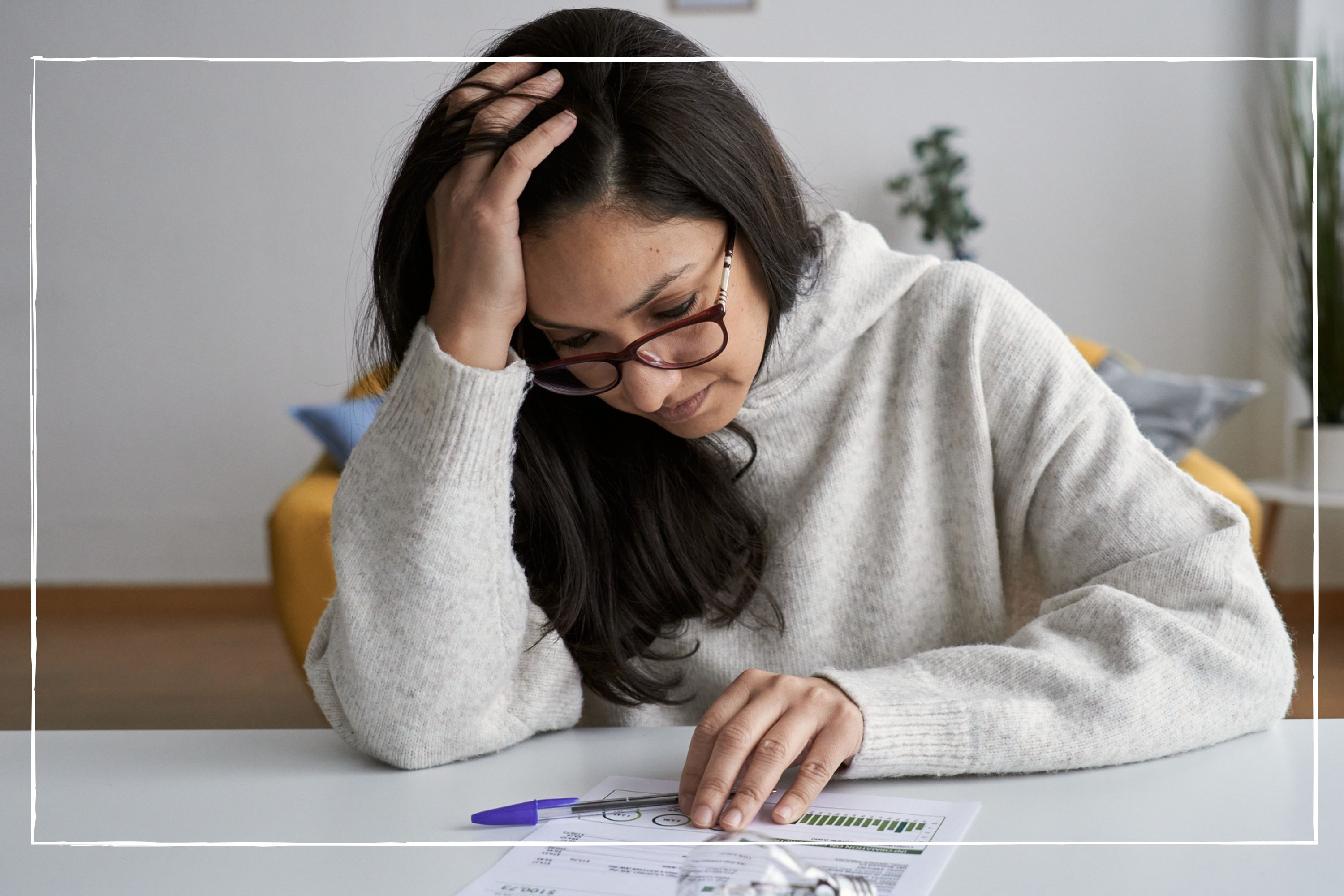
Ever feel like you need your energy bills explained as it's impossible to understand? You're not the only one. But it's never been more important to make sure you understand what you're being charged and to make sure you aren't being charged more than you should.
Energy bills contain a lot of information. As well as detailing how much you need to pay for gas and electricity, your bill will tell you how many units of energy you have used and how much each unit costs.
The energy crisis means you might be wondering how much will my energy bills cost and how to save energy in your home to keep costs as low as possible. The government’s Energy Price Guarantee has capped typical energy bills at £2,500 a year, but this will rise to £3,000 from April. But these figures are based on 'typical use', and so if you use less energy than the typical household, your bills will be lower. Money saving expert Martin Lewis is urging the government to postpone raising the Price Guarantee to £3,000, but it has not been confirmed whether this is happening.
The energy regulator, Ofgem, rules state that when energy suppliers bill their customers, the bill must include key information about the tariff the customer is on and how much energy they have used. But they can still be a bit confusing if you're not sure what all the information means.
Go.Compare's energy spokesperson, Gareth Kloet, says: “Energy suppliers typically send bills on a quarterly basis. When your bill comes through, it will detail your energy consumption and standing charges from the preceding period.
“As a general rule, your supplier will also offer customer access to an online portal, where you can view details of your energy use, access your bills and statements, submit meter readings and manage your account online.”
Energy bills explained
To help explain exactly what your energy bill means, we're using the example energy bill below. We've blanked out any personal information on the bill:
GoodtoKnow Newsletter
Parenting advice, hot topics, best buys and family finance tips delivered straight to your inbox.
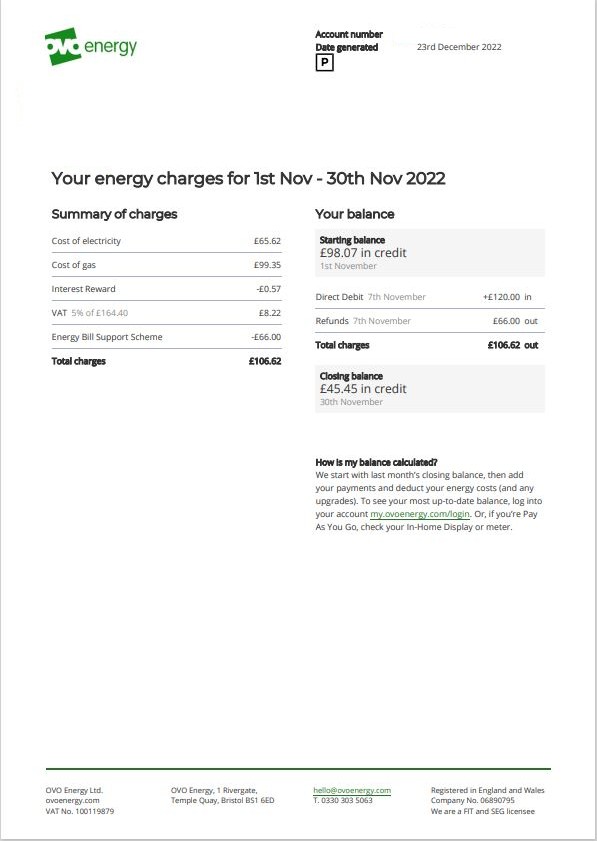
The bill in the above photo is from Ovo Energy for a dual fuel customer (taking both gas and electricity from one supplier). Bills from other suppliers may look slightly different but they will usually contain the same information.
If you get your gas and electricity from two different suppliers, you’ll get a bill from each. But if you’re on a dual fuel tariff you’ll just get one bill showing both fuels.
Your energy bill will show information such as your account number, the date of the bill, how much you are being charged for electricity and gas, VAT charges and any payments of the £400 energy rebate you’ve received.
It will also show your starting balance at the beginning of the billing period, the payments you’ve made and your closing balance. Your closing balance could be either in credit or you could be in debt to your energy supplier.
Your bill will go on to show charges for electricity, gas or both fuels in more detail.
These details will include:
- Unit charges for electricity/gas
- Standing charges for electricity/gas
- Opening and closing meter readings
- The total number of units used (in kilowatt hours sometimes noted as kWh)
- Serial numbers and meter point reference numbers (MPRN) for your meters
- How much energy you used in the same period last year.
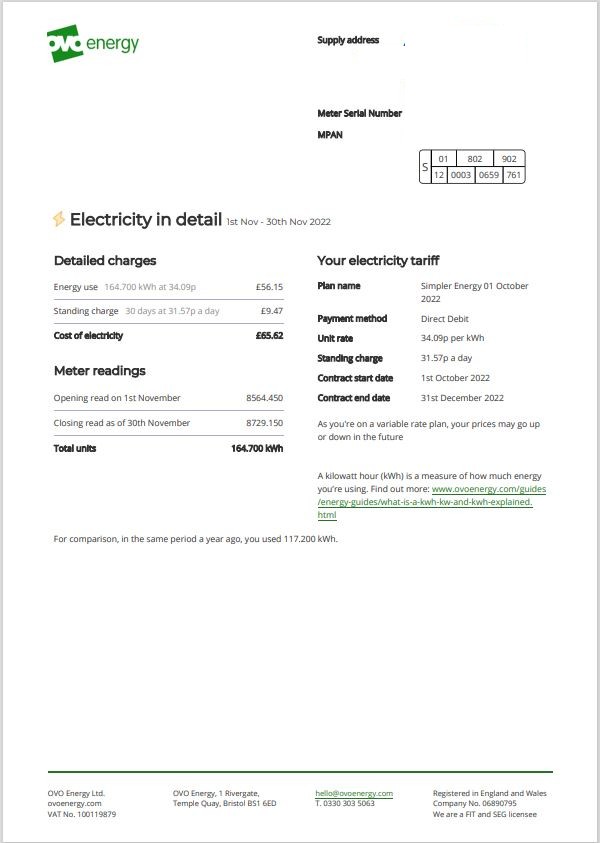
As you can see, if you get your electricity and gas from the same company, your usage will be broken down by fuel type on your bill.
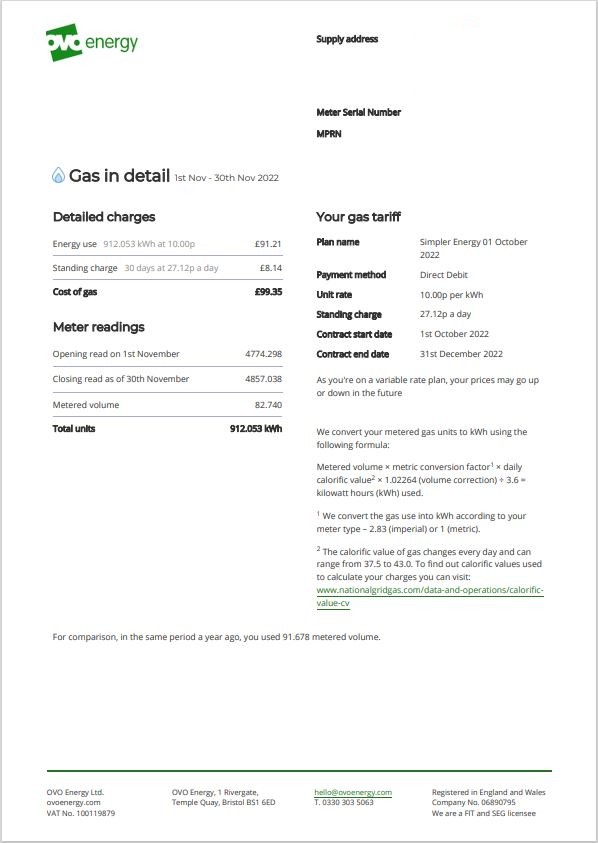
Other information on your bill will include the tariff or plan you are on, when it starts and will end, and how you pay for your energy (i.e. Direct Debit).
Your energy bill will also include a section of ‘useful information’, such as:
- What to do and who to call if you think you smell gas
- How to contact your local electricity network
- Your supplier’s sources of electricity (i.e. coal, natural gas, renewables)
- Where to get help and advice
- How to make a complaint
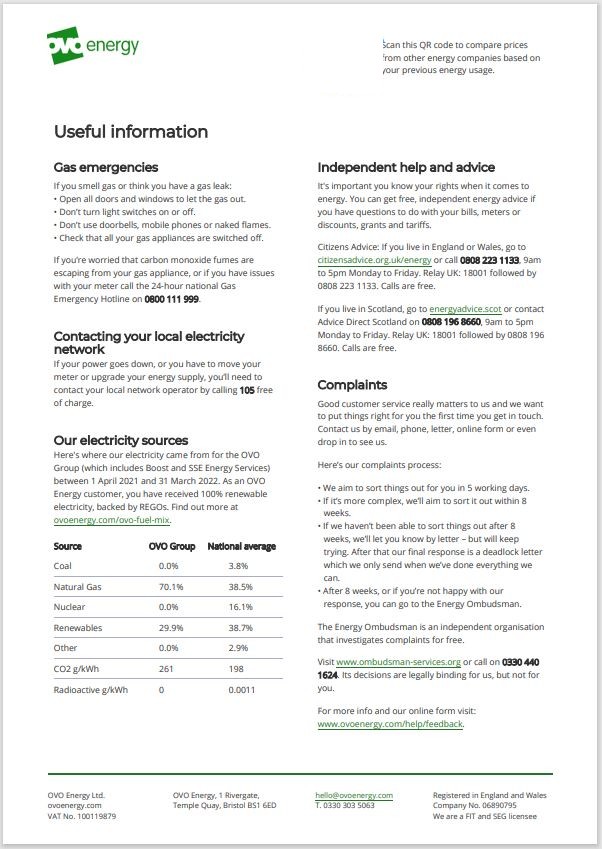
What is the QR code on my energy bill?
Energy suppliers are required to put a QR code on every bill. (As it relates to your specific bill, we've blanked it out on the image above).
This feature was introduced so you can quickly access the details on your bill, including your supplier’s name, tariff name and your annual usage. Just scan the QR code with the camera on your smart phone or tablet, and it should take you to a web page with the relevant information.
This information can be used to compare tariffs. However, it’s not advisable to switch tariffs at the moment due to uncertainty around when energy prices will go down.
How can I pay my energy bill?
There are numerous ways you can pay your energy bill: Direct Debit, cash or cheque, and you can pay monthly or every three months.
Greg Marsh, CEO and founder of cost of living forecast tool Nous.co, explains: “You can choose to receive your energy bill monthly or quarterly. It’s usually cheaper to pay by Direct Debit but you can also pay when you receive the bill.”
“Paying by fixed Direct Debit means the amount you pay is spread over the year. Your energy supplier estimates your annual usage and spreads it equally over 12 months, so you don’t see a bigger peak in costs during the winter when your usage is more likely to go up.”
Another option is to pay ‘on receipt of a bill’ every three months. You can pay by cash or cheque with this option.
Les Roberts, content manager at business energy comparison service Bionic, says: “Variable is the most accurate billing plan, but cold winter months will have much higher usage and therefore a higher payment. With a fixed plan you’ll know exactly how much you’ll pay each month, which is good for monthly budgeting, but you could end up over or underpaying."
“Most providers do accept cash or cheque payment but remember to leave enough time for a cheque payment to be processed, especially if it's going by post, to avoid late-payment penalty charges.”
How can I check if my energy bill is correct?
There are several ways to check your energy bill is correct. First, check that the meter serial numbers stated on your bill match the ones shown on your meters at your property. This will ensure you are being billed for the energy your household uses – not next door!
If you have a smart meter installed, your energy usage will be sent directly to your supplier and your bills should be accurate. But if you still have old-style meters, you’ll need to send regular readings to your supplier to get an accurate bill. If you haven’t sent readings, your readings will have (E) after them. This E means they are estimated.
“If a supplier hasn’t been able to get a meter reading, they will estimate your usage which may not be correct,” says Nous's Greg Marsh, “Check your own meter reading with your supplier’s estimate. If the difference is significant, send the new reading to your supplier and ask for an updated bill.”
If you have a smart meter but see an E after your usage, it could mean your meter isn’t working. It's then important to contact your supplier to let them know - they should be able to get it fixed for you so you can get back to accurate rather than estimated billing.
It's also a good idea to compare how much energy you used in the current billing period versus the previous year (which you should be able to see on your bill. Energy prices are a lot higher in 2022/23 than in 2021, so your bill is likely to be significantly higher than for the same period last year. However, your bill will also show you how many units of energy you used this year and for the same period last year – so you can compare your usage for accuracy.
“We recommend taking regular meter readings, not only to keep your supplier up-to-date on your usage, but so that you are aware of how seasonal changes – like the temperature and daylight hours – affect your energy bill,” advises energy expert Gareth Kloet.
Under Ofgem (the energy regulator) 'back billing' rules, your supplier can’t bill you for energy you used more than 12 months ago if it didn’t bill you correctly at the time. So if your bill contains historic charges, you can dispute your liability to pay.

Gareth has almost three decades of experience in utilities and the energy market. He’s worked for both new businesses and established energy companies, including Atlantic, Energylinx and now our sister brand Go.Compare, in his current role as energy expert and Director of Partnerships. He has been quoted on the state of the energy market in publications such as Express.co.uk and This is Money. Gareth has previously worked for leading insurance and comparison brands, making him our go-to for any energy and comparison know-how.

Emma Lunn is a multi-award-winning journalist who specialises in personal finance and consumer issues. With more than 18 years of experience in personal finance, Emma has covered topics including all aspects of energy - from the energy price cap to prepayment meter tricks, as well as mortgages, banking, debt, budgeting, broadband, pensions and investments. Emma’s one of the most prolific freelance personal finance journalists with a back catalogue of work in newspapers such as The Guardian, The Independent, The Daily Telegraph, the Mail on Sunday and the Mirror.
-
 How to save money: 28 family-friendly money-saving tips for mums and dads
How to save money: 28 family-friendly money-saving tips for mums and dadsUnderstanding how to save money is key to limiting the impact of rising costs as much as possible
By Sarah Handley Published
-
 14 hidden benefits of your Amazon Prime membership
14 hidden benefits of your Amazon Prime membershipWe reveal the less-obvious perks of a Prime membership that will help you get the most value out of your subscription fee
By Rachel Wait Published
-
 14 surprising ways to spend your Tesco Clubcard vouchers - from restaurants and cinema passes to mini breaks and Disney+
14 surprising ways to spend your Tesco Clubcard vouchers - from restaurants and cinema passes to mini breaks and Disney+Tesco Clubcard vouchers can help you cut the cost of everything from groceries and travel to days out and cinema tickets
By Heidi Scrimgeour Published
-
 How to get Disney+ for free and save up to £79.90 a year
How to get Disney+ for free and save up to £79.90 a yearEven though the streaming giant ended its free trial offering, there are still multiple ways you can get Disney+ for free for up to 12 months
By Sarah Handley Published
-
 Parents of teens who have just taken their GCSEs urged to check child benefit status ahead of August deadline
Parents of teens who have just taken their GCSEs urged to check child benefit status ahead of August deadlineWith a child benefit deadline looming, some parents could see their payments reduced or stopped altogether - here's why
By Sarah Handley Published
-
 Parents should hold off buying this back to school staple 'as close to their first day as possible', says retailer
Parents should hold off buying this back to school staple 'as close to their first day as possible', says retailerWith parents turning their attention to kitting their kids out for the new school year, research suggestions which items should be left until the last minute
By Sarah Handley Published
-
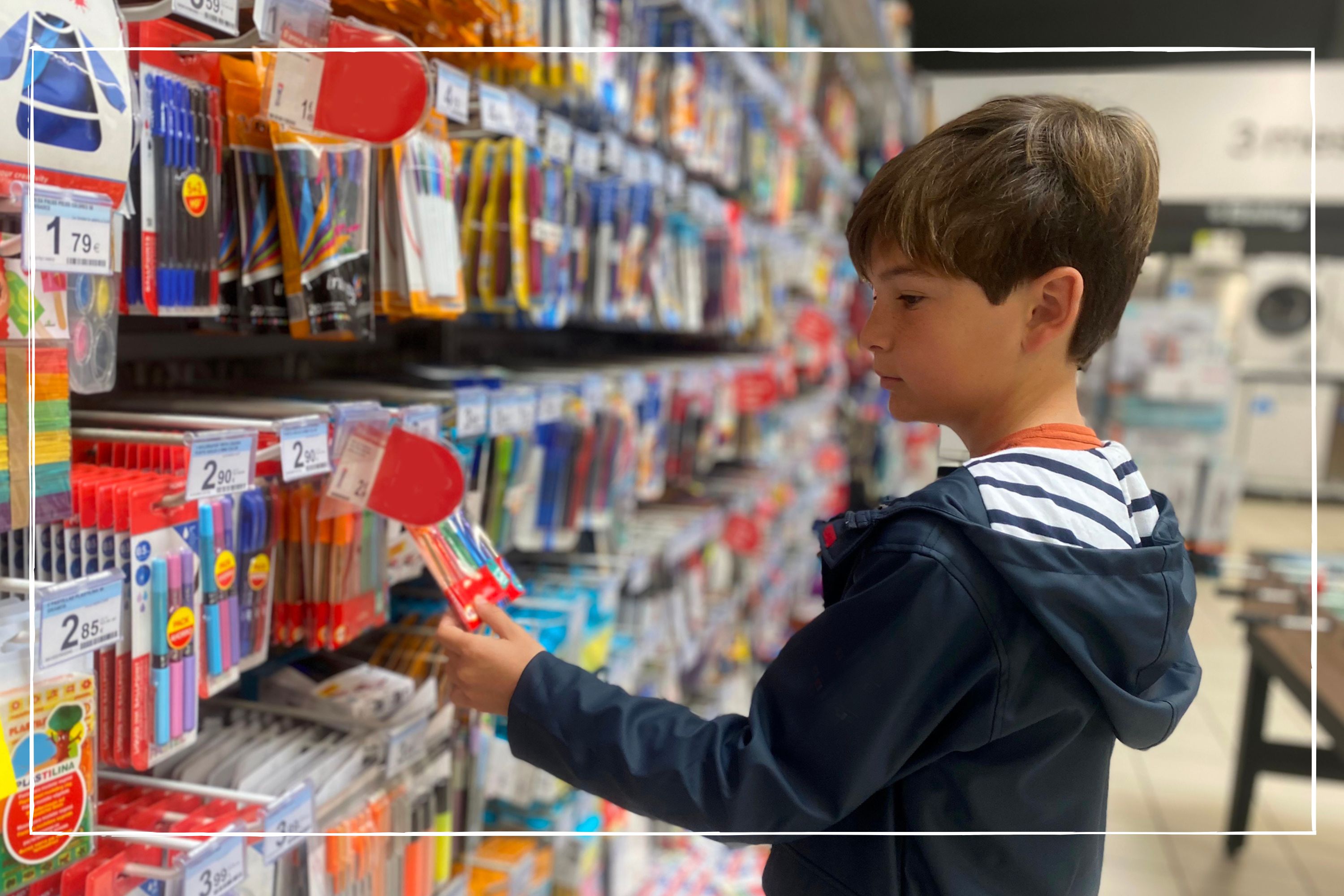 7 ways to save on back to school essentials, as its revealed parents will spend £2.3 billion in 2024
7 ways to save on back to school essentials, as its revealed parents will spend £2.3 billion in 2024We share ways you can get your child all the bits and bobs they need for the new school year, without breaking the bank
By Sarah Handley Published
-
 What day is child benefit paid around the bank holiday? Everything parents need to know
What day is child benefit paid around the bank holiday? Everything parents need to knowKnowing which day child benefit is paid when it comes to the bank holiday can help families plan their budgets accordingly
By Sarah Handley Published